Consider Independently Rolling Two Fair Dice
And nA B is the number of outcomes where the total is 5 and the green die is a 3 or a 4. A X is the maximum ie largest of the values of the two dice and Y is the sum.
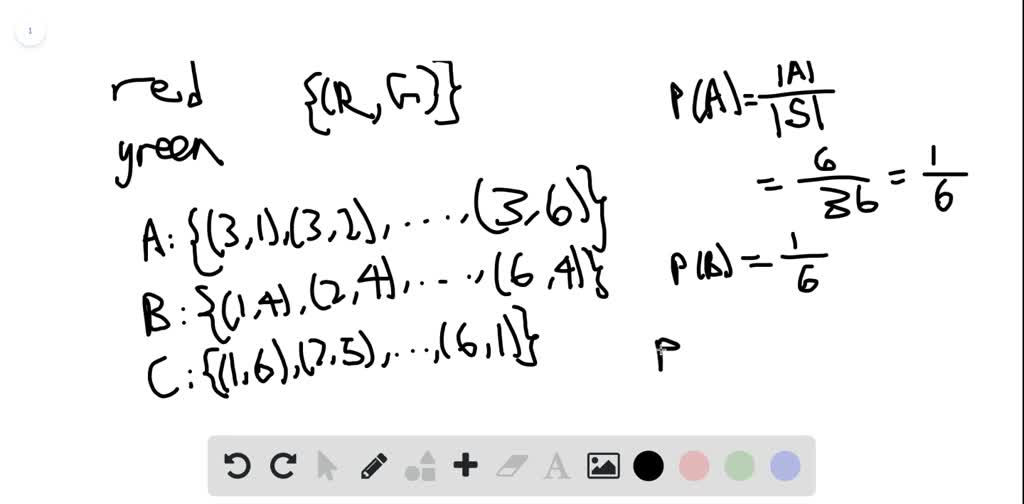
Solved Consider Independently Rolling Two Fair Dice One Red And The Other Green Let A Be The Event That The Red Die Shows 3 Dots B Be The Event That The Green Die
The probability that double 6 does not occur is 35 36 n so the probability that it occurs at least once is 1 35 36 n.
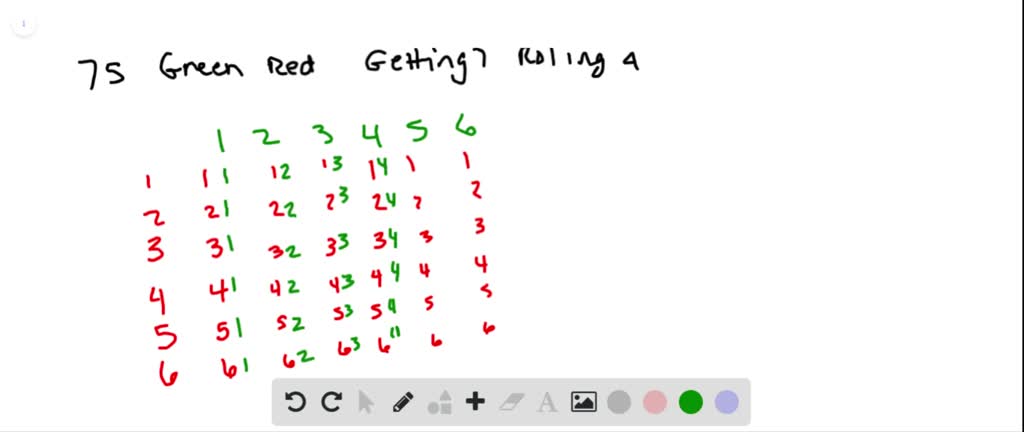
. Consider rolling two fair dice. P A B nA B nT Where nT is the total number of possible outcomes. Let A be the event that the red die shows.
C be the event that the total number of dots showing on. B red die is a 6. The dice are fair all sides are equally likely and the two die rolls are independent.
3 dots B be the event that the green die shows 4 dots and. As there are two dices then each has 6 possible outcomes making nT 36. What is the probability that the total number of points shown on these two dice is a perfect square.
When a fair die is tossed each of the six sides numbers 1 to 6 is equally likely to land face up. The use of a tree diagram demonstrates that there are 6 x 6 36 possible outcomes from rolling two dice. Consider independently rolling two fair dice one red and the other green.
Rolling two fair dice more than doubles the difficulty of calculating probabilities. Let A be the event that the red die shows 3 dots B be the event that the green die shows 4 dots and C be the event that the total number of dots showing on the two dice is 7. Consider independently rolling two fair dice one red and the other green.
Consider first P A B which we can calculate using. How large need n be to make this probability at least 12. 2 Consider the experiment of rolling 3 dice each of which has 6 sides.
What is the probability that you get either. Snake eyes of double boxcars. This question hasnt been solved yet.
Statistics and Probability questions and answers. Consider independently rolling two fair dice one red and. Consider independently rolling two fair dice one red and the other green.
Consider the following eventsA rolling a number less than 6 on the first die B rolling a sum of 8 or moreClick here to see the sample space. The sides of each die are numbered from 1 to 5. Let A be the event that the red die shows 3 dots B be the event that the green die shows 4 dots and C be the event that the total number of dots showing on the two dice is 7.
When dealing with independent events we use the multiplication rule. It is easy to check from the joint probability distribution that throwing of two dices are statistically independent. Consider a sequence of independent Bernoulli trials each of which is a success with probability p.
Find the joint mass function of X Y when. The two dice is 7. If G 3 R 2.
Write your answer as a fraction. Let A be the event that the red die shows 3 dots B be the event that the green die shows 4 dots and C be the event that the total number of dots showing on the two dice is 7. A red die is a 3.
This is because rolling one die is independent of rolling a second one. One roll has no effect on the other. C be the event that the total number of dots showing on.
Consider independently rolling two fair dice one red and the other green. Since each die has 6 possible outcomes the number of possible outcomes for the roll of three dice is 6x6x6 216. Are these events pairwise independent ie are A and B independent events are A and C.
Let A be the event that the red die shows. Let A be the event that the red die shows 3 dots B be the event that the green die shows 4 dots and C be the event that the total number of dots showing on the two dice is 7. Each of the sides come up with equal probability of frac16.
Explain whether the following pairs of events are mutually exclusive independent both or neither. Consider a sequence of six independent rolls of this. What is the probability that no two dice land with the same number side up ie.
Consider the experiment of rolling two fair dice. Event A is the total is 10 ie the sum of. Probability and Statistics for Engineering and the Sciences Loose-Leaf Version 9th Edition Edit edition Solutions for Chapter 2 Problem 82E.
Find PA and B. Let A be the event that the red dots B the event that the green die shows 4 dots and C be the event that the total number of dots showing on the two dice is 7. Consider independently rolling two fair dice one red and.
Let A be the event that the red die shows 3 dots B be the event that the green die shows 4 dots and C be the event that the total number of dots showing on the two dice is 7. You roll two five-sided dice. Consider independently rolling two fair dice one red and the other green.
The two dice is 7. 5Two fair 6-sided dice are thrown n times in succession. Let A be the event that the red die shows 3 dots B be the event that the green die shows 4 dots and C be the event that the total number of dots showing on the two dice is 7.
Consider independently rolling two fair dice one red and the other green. Are these events pairwise independent. Let X 1 denote the number of failures preceding the first success and.
Let A be the event that the red die gets a 3 B be the event that the green die gets a 4 and C be the event that the total number showing on the two dice is 7. 3 dots B be the event that the green die shows 4 dots and. Consider independently rolling two fair dice one red and the othergreen.
Are these events pairwise independent ie are A and B independent events are A and C independent and are B and C. Compute the probability that double 6 ie 6 on each die appears at least once in the n throws. B green die is a 6.
You dont need to simplify the fraction. 1 Answer to Consider independently rolling two fair dice one red and the other green. Consider independently rolling two fair dice one red and the other green.
Assume that the die is fair ie. Each of the three dice rolls a different number. Two fair dice one red and one green are tossed.
Let A be the event that the red die shows 3 dots B be the event that the green die shows 4 dots and C be the event that the total number of dots showing onthe two dice is 7. A red die is a 3. Two fair dice are rolled.
Given Two Fair Dice What Is The Probability That The Sum Of Their Numbers Is 4 If Exactly One Die Shows A 3 Quora
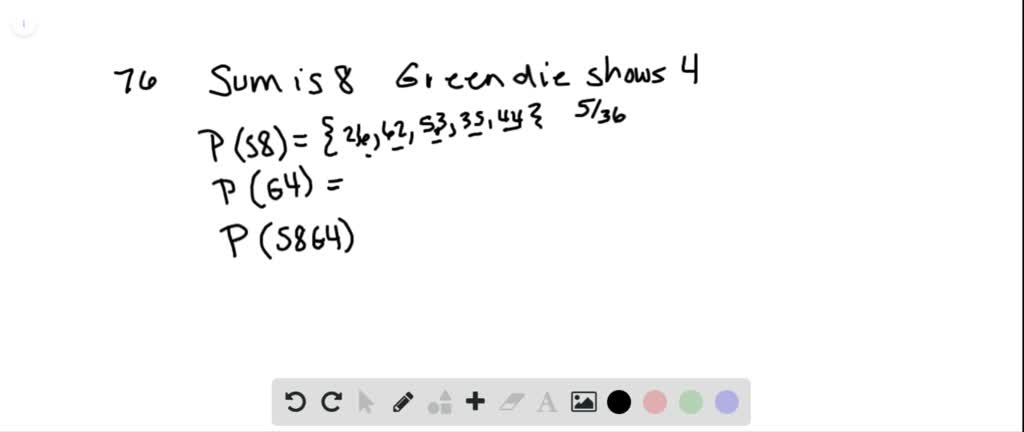
Solved Rolling Dice Suppose You Roll Two Fair Six Sided Dice One Red And One Green Are The Events Sum Is 8 And Green Die Shows A 4 Independent Justify Your Answer

Solved 82 Consider Independently Rolling Two Fair Dice One Chegg Com
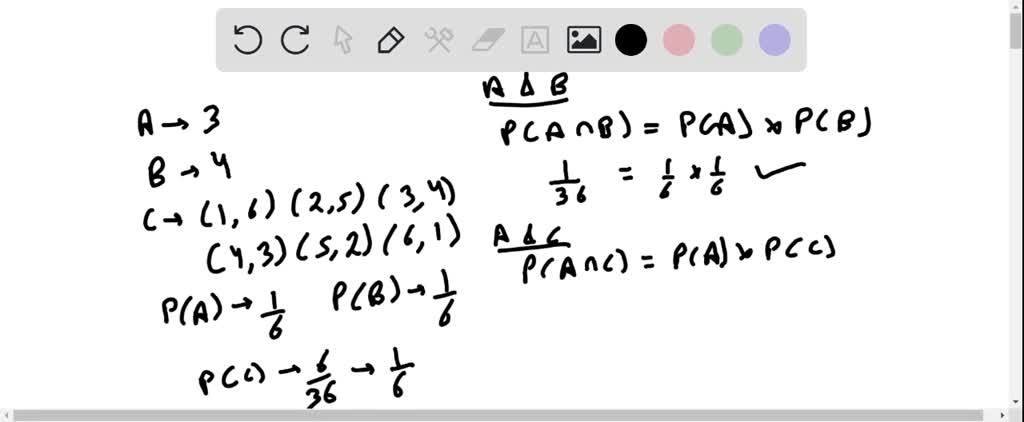
Consider Independently Rolling Two Fair Dice One Red Itprospt
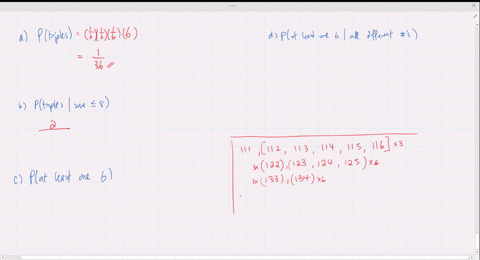
Solved Two Unbiased Dodecahedral 12 Faces Dice Are Thrown The Scores Are The Numbers On The Top Side Find The Probability That A At Least One Twelve Shows B A Sum Of 12
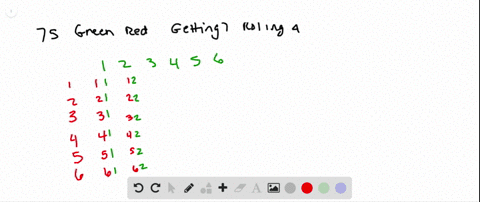
Solved Consider Independently Rolling Two Fair Dice One Red And The Other Green Let A Be The Event That The Red Die Shows 3 Dots B Be The Event That The Green Die
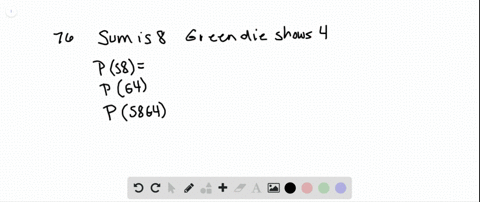
Solved Consider Independently Rolling Two Fair Dice One Red And The Other Green Let A Be The Event That The Red Die Shows 3 Dots B Be The Event That The Green Die

Solved Rolling Dice Suppose You Roll Two Fair Six Sided Dice One Red And One Green Are The Events Sum Is 7 And Green Die Shows A 4 Independent Justify Your Answer

Probability Of Two Fair Dice Rolls Having A Total Of 7 Or 11 Mathematics Stack Exchange
Roll Two Fair Dice Let X Be The Largest Of The Two Faces What Is The Distribution Of X Quora
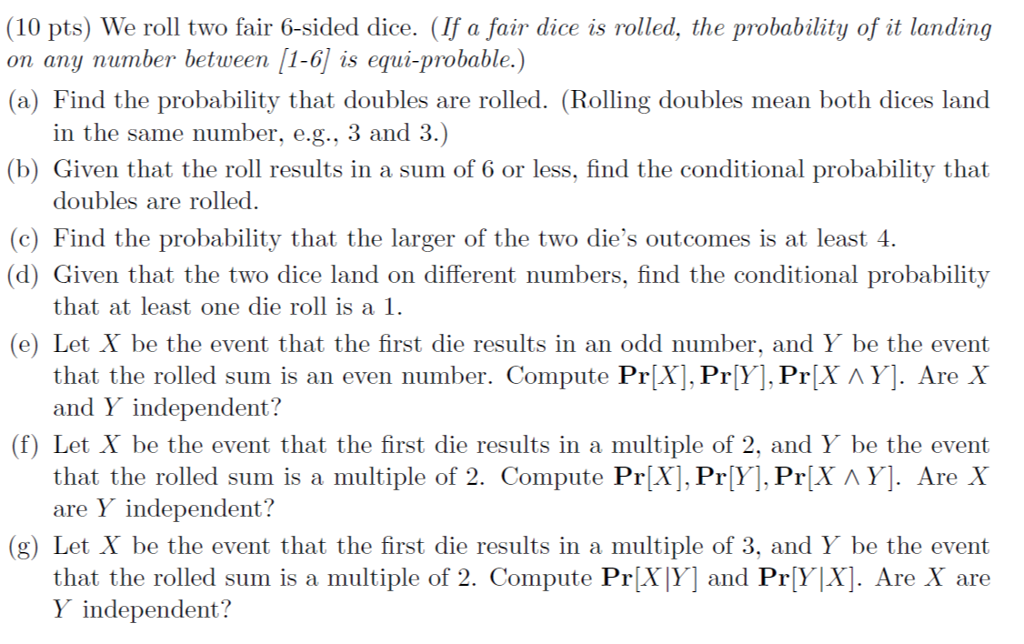
Solved We Roll Two Fair 6 Sided Dice If A Fair Dice Is Chegg Com
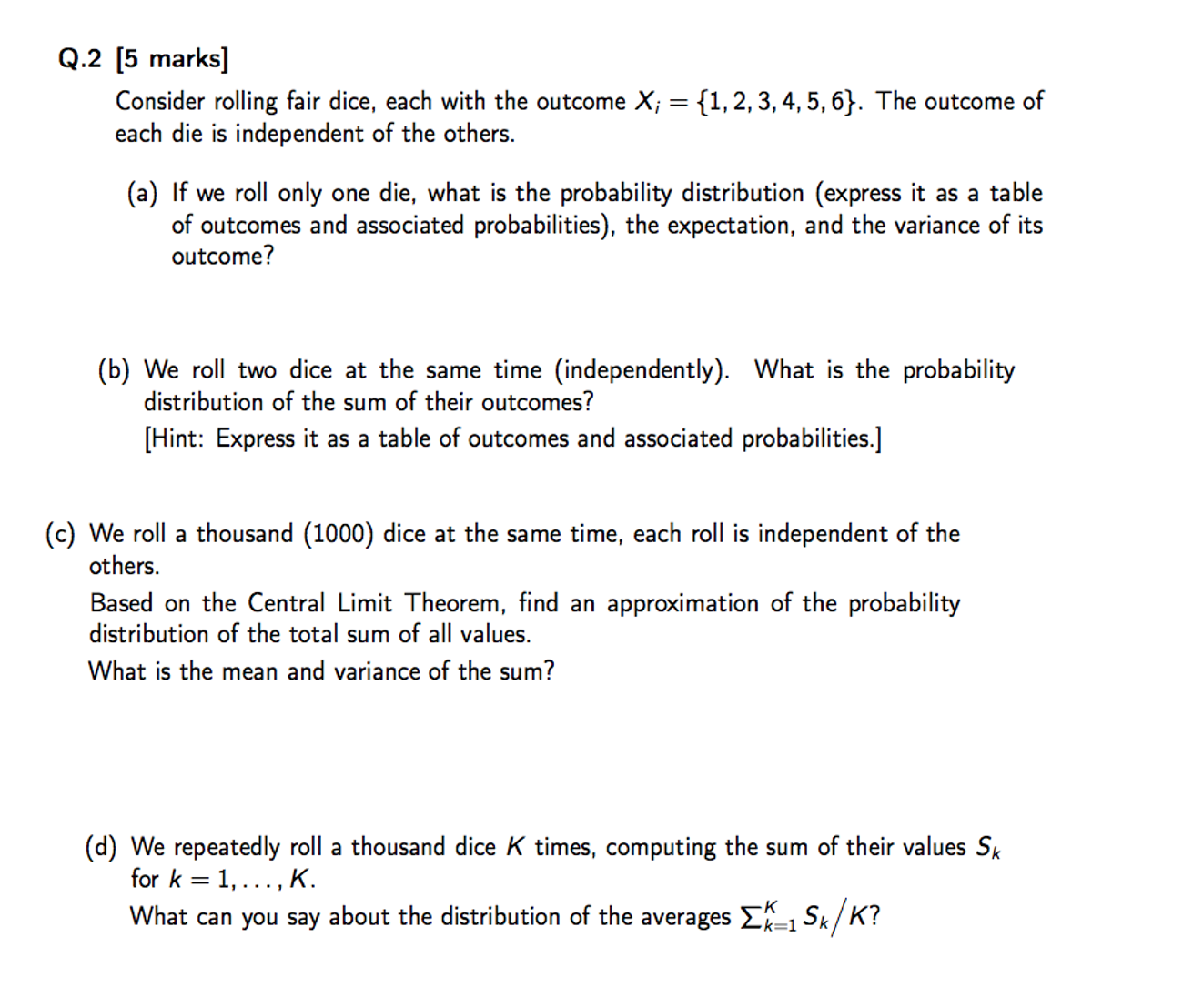
Solved Q 2 5 Marks Consider Rolling Fair Dice Each With Chegg Com

Solved 6 12 Points Devorestat9 2 E 082 Consider Chegg Com

Solved 20 Points 4 Consider Independently Rolling Two Chegg Com

Color By Number Color Squares To Write Pixels Number Numbers Activity For Toddlers Free Preschool Preschool Coloring Pages Free Preschool Daycare Activities

Solved Consider Independently Rolling Two Fair Dice One Red Chegg Com
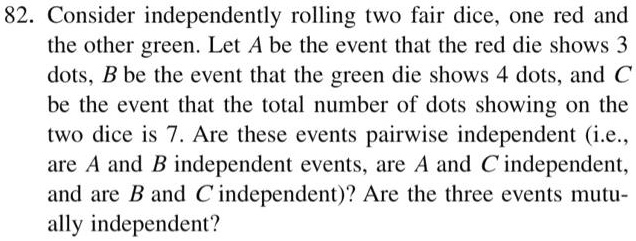
82 Consider Independently Rolling Two Fair Dice One Itprospt

A Fair Dice Is Rolled Twice The Probability That An Odd Number Will Follow Even Number Gate Ec 2005 Youtube
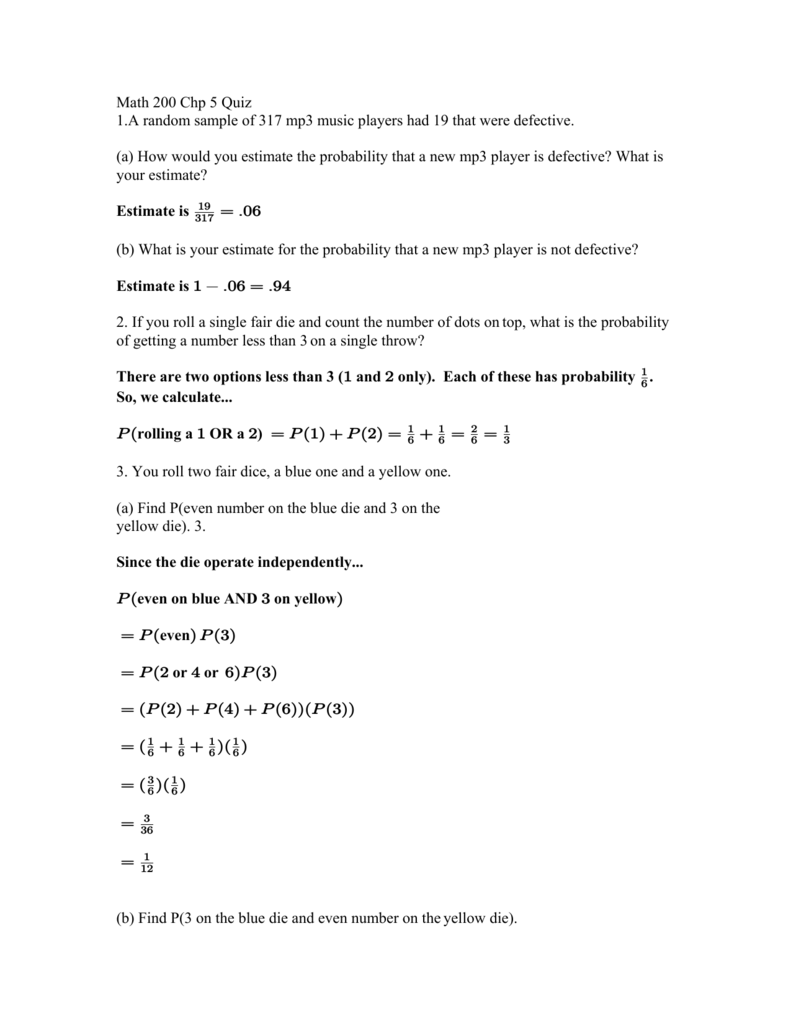
Comments
Post a Comment